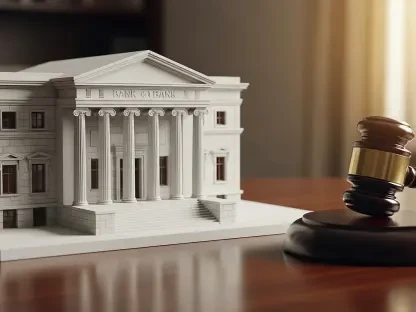Background of the Tariff Revenue Dispute
A staggering $90 billion in tariff revenue hangs in the balance as the U.S. Supreme Court prepares to address a pivotal dispute over trade policy, an issue rooted in a major trade deal with profound implications for national economic stability and the framework of U.S. trade regulations. The revenue, collected through tariffs on imported goods, has sparked intense debate over who holds the authority to impose such measures and how they impact the broader economy. With global markets watching closely, the outcome of this case could redefine the financial landscape for both government and private sectors, potentially altering the course of trade strategies for years to come.
At the heart of this conflict are diverse stakeholders with significant interests at stake. Business groups and trade associations, representing industries like steel, agriculture, and technology, argue that the tariffs have imposed undue burdens, raising costs and disrupting supply chains. Meanwhile, the federal government defends the collection of this revenue as critical to protecting domestic markets and funding national priorities. The clash between these parties underscores the tension between economic protectionism and free-market principles, making this case a focal point for debates on how trade policies should be shaped and enforced.
Legal Dimensions of the Case
Constitutional Questions on Authority
The core of this legal battle revolves around a fundamental question of separation of powers under the U.S. Constitution. Specifically, the case challenges whether the President has the unilateral authority to impose tariffs without explicit congressional approval, as outlined in Article I, which grants Congress the power to levy taxes. Petitioners, including major industry players, contend that tariffs function as taxes and thus require legislative consent, arguing that the current executive actions overstep constitutional boundaries and undermine democratic checks.
In contrast, the government defends the President’s ability to enact tariffs as a necessary tool for trade policy, pointing to historical instances where executive action was used to address economic or security concerns. They argue that such flexibility is essential in responding to dynamic global trade challenges, often citing precedents where tariffs were imposed without direct congressional input. This disagreement highlights a critical tension between executive efficiency and legislative oversight, with the Supreme Court’s ruling poised to clarify the limits of presidential power in this domain.
Potential Legal Precedents and Outcomes
The possible outcomes of this case carry significant weight for the future of U.S. trade policy. A ruling in favor of the petitioners could restrict executive authority, mandating greater congressional involvement in tariff decisions and potentially leading to refunds or reallocations of the disputed revenue. Such a decision would reinforce the principle of legislative control over taxation, reshaping how trade measures are initiated and sustained in response to international economic pressures.
Alternatively, if the Court sides with the government, it could solidify the President’s ability to act independently on trade matters, setting a precedent that might expand executive influence over economic policy. Legal scholars note that past cases involving trade and taxation have often leaned toward balancing powers, but the current polarized climate may push for a more definitive stance. This ruling will likely serve as a benchmark for future disputes, influencing how authority is distributed between branches of government in matters of commerce and revenue.
Economic Implications and Industry Impact
The economic stakes tied to the $90 billion in tariff revenue are immense, with potential ripple effects across federal budgets and national debt considerations. If the Court mandates refunds to affected businesses, the government could face significant fiscal strain, complicating funding for public programs at a time when economic recovery remains a priority. This scenario raises questions about how such a shortfall might be addressed, whether through increased borrowing or cuts to other areas of expenditure.
Industries such as retail, automobiles, and technology stand to be directly affected by the ruling. Higher production costs due to sustained tariffs have already squeezed profit margins for companies reliant on imported materials, while the threat of export retaliation from trade partners looms large. For instance, agricultural exporters fear losing their competitive edge in foreign markets if retaliatory measures escalate, while tech firms grapple with disrupted supply chains. The uncertainty surrounding the case continues to create a challenging environment for strategic planning and investment in these sectors.
Beyond immediate financial impacts, the broader economic landscape could shift depending on the outcome. A decision limiting executive tariff power might ease burdens on import-dependent industries, potentially lowering consumer prices in the short term. However, it could also weaken domestic producers who rely on protective tariffs to compete, illustrating the delicate balance between safeguarding local jobs and maintaining affordability for consumers. These dynamics underscore the complexity of aligning trade policy with economic health.
Political and Regulatory Dynamics
Political tensions are palpable as this case exposes deep concerns over unchecked presidential authority in trade matters. Lawmakers from across the political spectrum have voiced unease about the potential for tariffs to be wielded for political leverage rather than economic necessity, fearing that such power could skew policy toward short-term gains over long-term stability. This bipartisan apprehension reflects a broader desire to restore balance and ensure that trade decisions align with national interests rather than partisan agendas.
From a regulatory perspective, the case intersects with existing frameworks like Section 232 of the Trade Expansion Act, which has historically granted the executive branch leeway to impose tariffs on national security grounds. Critics argue that this provision has been overused, stretching its original intent beyond reasonable limits. The Biden administration, while defending the revenue in court, has adopted a measured approach, signaling a willingness to adapt to judicial constraints while preserving some flexibility for trade negotiations.
The interplay between political will and regulatory mechanisms adds another layer of complexity to the dispute. A Supreme Court ruling could prompt legislative efforts to redefine or restrict the scope of executive trade powers, potentially leading to new laws that tighten oversight. Such developments would reshape the regulatory environment, requiring industries and policymakers alike to navigate a transformed landscape of accountability and authority in trade governance.
Global Trade and Market Reactions
On the international stage, the ramifications of this case are drawing intense scrutiny from key trade partners such as China, Canada, and the European Union. A ruling that curbs U.S. executive power over tariffs could embolden these nations in future negotiations, providing them with greater leverage to challenge American trade policies. Conversely, a decision affirming presidential authority might strengthen the U.S. position but risk escalating tensions with allies and adversaries alike, potentially triggering retaliatory measures.
Market reactions to the uncertainty have already manifested in notable stock market volatility, with investors closely monitoring developments. Import-heavy companies could see short-term gains if tariffs are reduced or refunded, offering relief from cost pressures. However, domestically focused firms that benefit from protective tariffs face potential losses if such measures are scaled back, highlighting the divergent interests at play within the business community and the challenges of predicting market outcomes.
Global trade dynamics are also at risk of shifting, as other nations assess how the U.S. ruling might influence their own policies. Experts suggest that a precedent set here could inspire similar legal challenges elsewhere, particularly in jurisdictions with strong judicial oversight of trade decisions. This interconnectedness emphasizes the broader implications of the case, positioning it as a potential catalyst for reevaluating trade norms on a worldwide scale.
Future Outlook and Broader Implications
Looking ahead, the Supreme Court’s decision will likely cast a long shadow over U.S. trade policy, shaping how industries adapt to evolving regulations and economic conditions. A redefined balance of power between the executive and legislative branches could either streamline or complicate the process of crafting trade agreements, depending on the extent of congressional involvement mandated. This shift will demand agility from businesses as they adjust to new rules and potential changes in market access.
Emerging trends in trade negotiations, such as a growing emphasis on sustainability and digital commerce, may also be influenced by the ruling. If executive authority is curtailed, the U.S. might face delays in responding to rapid global shifts, potentially hindering innovation in policy-making. On the other hand, greater legislative oversight could foster more comprehensive strategies that balance economic goals with environmental and technological priorities, though at the risk of slower implementation.
The broader implications for global positioning are equally significant. A decision that alters U.S. trade leverage could affect alliances and competitive standings, particularly in high-stakes sectors like technology and energy. As the international community recalibrates its approach based on the outcome, the need for strategic foresight in policy and business planning becomes ever more critical, ensuring that adaptability remains a cornerstone of navigating future challenges.
Final Thoughts
Reflecting on the intense legal and economic battle that unfolded over the $90 billion tariff revenue dispute, the Supreme Court’s deliberation stood as a defining moment for U.S. trade policy. The arguments and outcomes debated during this period illuminated critical fault lines in constitutional authority, industry resilience, and global trade relations. Each stakeholder, from government bodies to private enterprises, grappled with the weight of potential shifts that could reshape their operational realities.
Moving forward, actionable steps emerged as essential for navigating the aftermath of this landmark case. Industries were encouraged to diversify supply chains and invest in domestic alternatives to mitigate risks tied to tariff uncertainties. Policymakers faced the task of crafting balanced legislation that could prevent future overreach while maintaining flexibility to address urgent trade needs. For global partners, the focus shifted to fostering dialogue and building frameworks that could withstand the fluctuations of U.S. policy changes, ensuring stability in international commerce. These considerations marked the beginning of a proactive approach to an evolving trade landscape.









